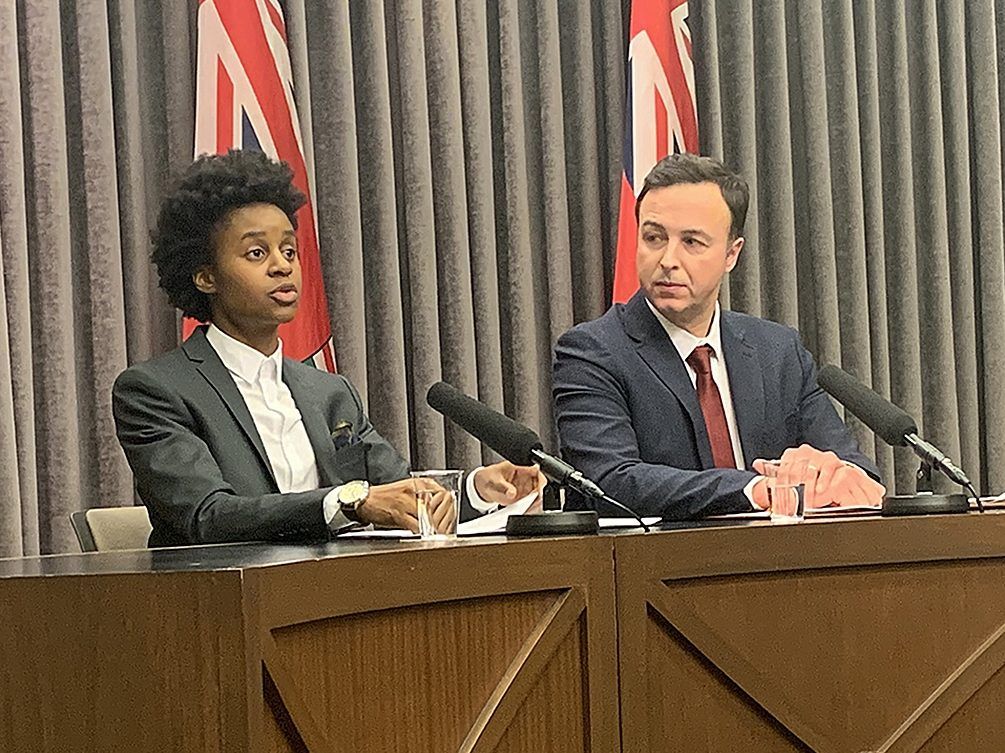
The Manitoba government is now forecasting a $1.3 billion deficit for the 2024-25 fiscal year, marking a $500 million increase over the $796 million shortfall outlined in the spring budget.
Finance Minister Adrien Sala shared the grim update Monday in the province’s second-quarter fiscal report, which also shows significant improvements in Manitoba’s economic performance despite ongoing fiscal challenges.
“Our government is working to grow the economy, increase productivity, and attract investments,” Sala said. “While the deficit remains higher than anticipated, we are making strides toward balancing the budget by 2027.”
The deficit increase reflects a combination of factors, including surging health care costs, reduced federal transfers, and rising debt servicing expenses, Sala said.
Manitoba’s economy is gaining momentum, with key economic indicators surpassing expectations outlined in Budget 2024. The report forecasts higher real GDP growth, lower inflation, and an increase in average weekly earnings.
Employment has also surged, with over 21,000 new jobs added year-over-year, including nearly 15,000 in the private sector. The province’s unemployment rate has dropped to 4.2 per cent, a full percentage point below the national average.
“Manitobans can feel confident our government is preparing for potential economic pressures and will be ready to respond with a plan to protect jobs and our economy,” Sala said, pointing to initiatives like the Indigenous Loan Guarantee Program and investments in renewable energy.
Health Care Spending Overshoots
Despite economic progress, health care costs remain a significant challenge. Health authorities are projected to exceed their budget by $230 million, contributing to a $438 million overspend in the Health, Seniors, and Long-Term Care portfolio. Minister Asagwara attributed the overruns to systemic inefficiencies stemming from previous government decisions.
“Brian Pallister and the previous government created a chaotic health care system that was duplicative and ignored fiscal responsibility,” Asagwara said. “We’ve taken steps to impose accountability and help health authorities break the cycle of overspending.”
The province has hired third-party auditors to examine health authority finances and directed service delivery organizations to shift eight per cent of corporate funding to bedside care. Steps like eliminating corporate positions and reducing reliance on private agency nurses have saved millions, but further work is needed to control costs.
“We owe it to Manitobans to ensure every dollar is spent where it matters most — at the bedside,” Asagwara said, adding that audits will be released publicly in the New Year.
Mixed Fiscal Outlook
The report highlights various shifts in government revenues and expenditures:
- Federal transfers are forecast to decrease by $112 million, driven by adjustments to the Canada-Manitoba Early Learning and Child Care Agreement.
- Corporate income tax revenue is projected to rise by $56 million due to stronger tax assessments, while retail sales tax revenue is expected to increase by $14 million.
- Manitoba Hydro is forecasting a net loss of $76 million, a $164 million drop from its initial projection of $88 million in net income.
Meanwhile, debt servicing costs are projected to exceed budget by $51 million, reflecting increased borrowing and higher-than-expected interest rates. Other sectors, such as agriculture and emergency expenditures, are reporting under-expenditures due to favourable conditions.
Efficiency Measures and Fiscal Discipline
Sala outlined measures to streamline government operations, including procurement reforms, which have saved $22.9 million so far. The government has also eliminated programs like the PCs’ Teachers’ Ideas Fund and other administrative divisions to cut costs.
“We’ve been tightening our belts just like Manitobans have,” Sala said. “These decisions are about making government more efficient so we can dedicate resources to improving services.”
While the economic outlook is improving, Sala acknowledged risks such as global trade uncertainties and potential economic slowdowns. However, he expressed confidence in the province’s ability to navigate challenges, citing ongoing fiscal management and economic diversification efforts.
“The deficit is coming down, and the economy is improving,” Sala said. “We’re committed to protecting jobs and putting our province in the best fiscal position to weather any potential storm.”
Asagwara emphasized the importance of restoring accountability in health care to achieve better outcomes for patients and the province’s financial health.